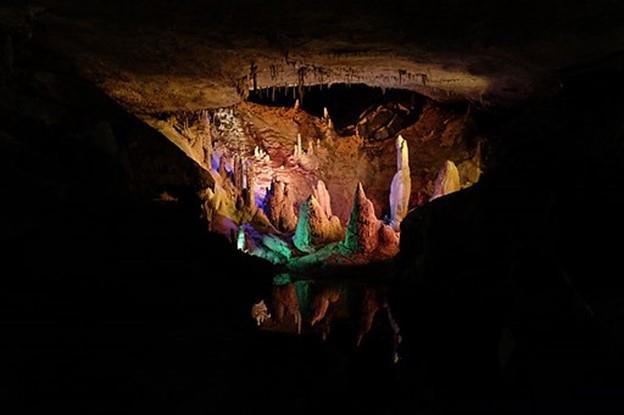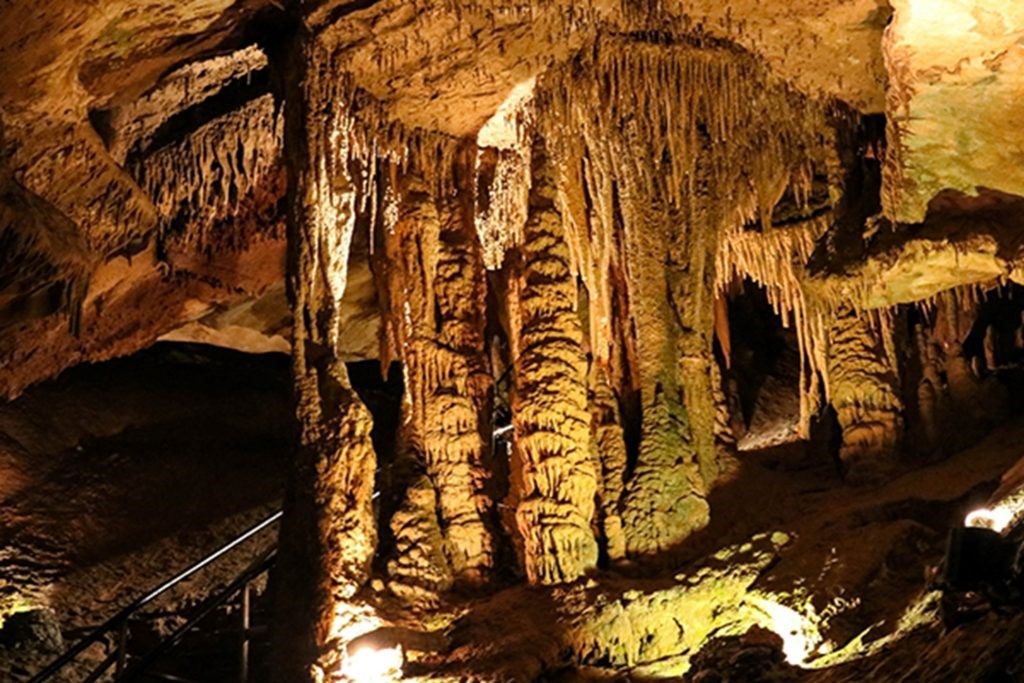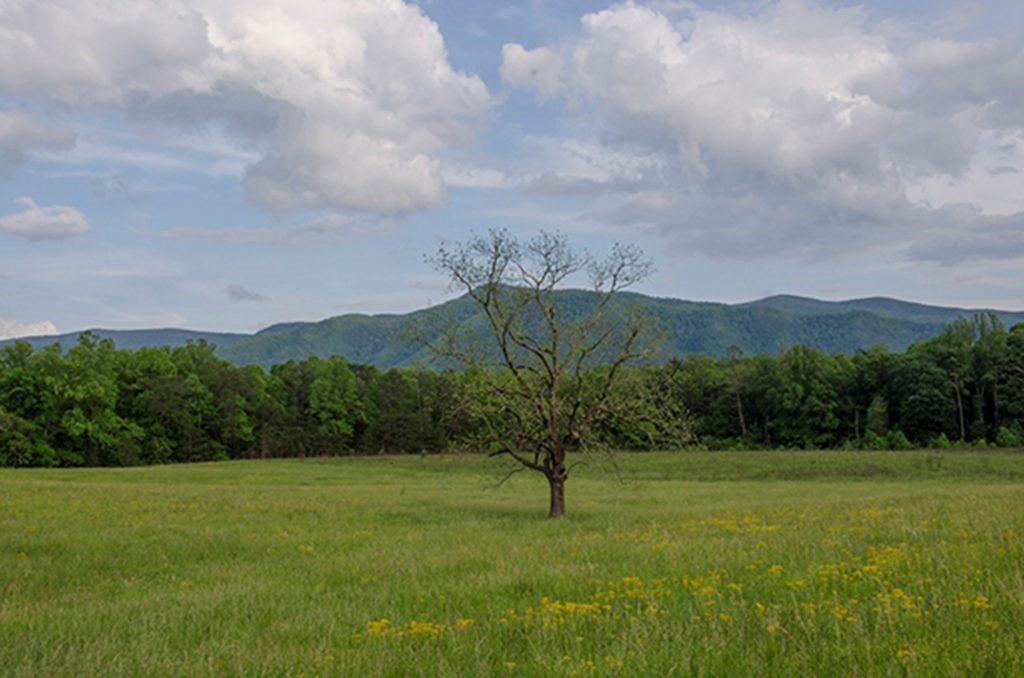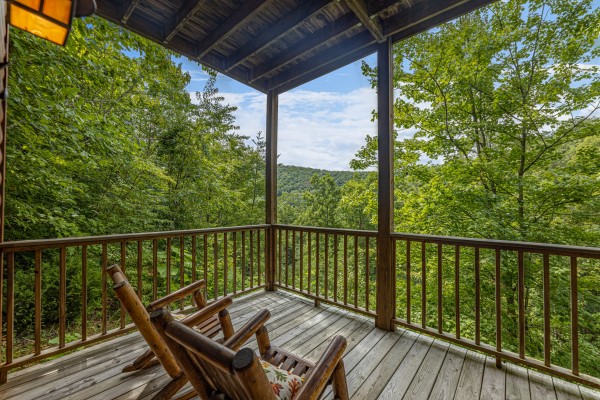Explore the Cool Caves of the Great Smoky Mountains

Did you know you could explore cool caves when you visit the Smokies? Tennessee has more than 10,000 caves, and the Great Smoky Mountains National Park (GSMNP) has plenty for you on a visit to the area. More than 90% of the caves are located on private property, according to the Tennessee Chapter of The Nature Conservancy. Here are some cool caving ideas for your trip to the Great Smoky Mountains.

Tuckaleechee Caverns in the lovely town of Townsend, TN are some of the highest rating Cave or Cavern of the Eastern United States, according to the non-profit National Caves Association.
“Carved inside the earth’s oldest mountain chain and estimated to be between twenty to thirty million years old, the Caverns are rich in history and lore.”
The “BigRoom” on one end of the 1.25-mile tour could almost fit a football stadium inside it. On the other half of the tour view Silver Falls – the tallest subterranean waterfall in the Eastern U.S. at 210 feet from top to bottom. You can view millions of formations along the walk.
Opening The Caverns
The caverns were opened to the public for a year in 1931 and then closed because of the Depression. W.E. “Bill” Vananda and Harry Myers of Townsend played in the caves as children and later talked about opening them to the public while there were students at Maryville College in 1949.
“When Associated Press Pulitzer Prize Winning columnist Hal Boyle interviewed them about 1960, Myers recalled ‘We played Tom Sawyer in the main passage as kids. We explored it for three-quarters of a mile, sometimes wriggling on our bellies, and lighting our way with homemade lamps – pop bottles filled with kerosene.’”
Vananda and Myers went to Alaska to work on construction jobs to raise the money to excavate and open the caves. “After four years of lonely toil – the two men had carried in hundreds of tons of sand, cement and gravel on their backs to build steps and passageways – they opened the cave in 1953.”
Discoveries
In 1954, the Big Room was discovered by members of the National Speleological Society. The big room is more than 400 feet long, 300 feet across, and 150 feet deep. Comparably, Mammoth Cave in Kentucky has maximum ceiling heights of only about 120 feet. The Big Room has stalagmites up to 24 feet high.
Vananda and his wife, Golden, and Myers and his wife, Nita, owned and operated the caverns until 1982. The Myers sold their interest in the Caverns to the Vanandas in 1982. Today, Bill Vananda’s grandson, Benjamin, oversees the operation, according to The Daily Times of Alcoa, TN. A certified rescue rappel and certified lead climb member of the National Cave Association and National Speleological Society, Benjamin can claim the distinction of having explored more of the caves than any other individual.

Visit Townsend and the Tuckaleechee Caverns at 825 Cavern Road, (865) 448-2274
About Townsend
Townsend is one of the three main gateways to Cades Cove, one of the most popular destinations in the Smokies. Read more about it in our blog. A 20-minute drive south of Townsend, A 20-minute drive south of Townsend, the 11-mile Cades Cove Loop Road is worth every second spent there. The loop closes to motor vehicle traffic each Wednesday, from June 17th through September 30th. A bike is a great way to get all the way around. If you didn’t bring one, visitors can rent one at Cades Cove Trading Co.
Exploring Caves and Cave Dwellers
When you explore cool caves, you’ll find that some really cool animals live in caves.
Trogloxenes are temporary cave residents that freely move in and out of the cave. Bats (the only true flying mammal), bears, skunks, moths, and people are examples of trogloxenes.

Troglophiles can live in the dark zones of a cave, or they can also survive outside the cave. At times they will venture out in search of food. Earthworms, some beetles, cave crickets, frogs, salamanders, and some crustaceans such as crayfish fit this category.
Troglobites are the true cave dwellers and spend their entire lives in the cave. They cannot survive outside the caves. Among these are cave fish, cave crayfish, cave shrimp, isopods, amphipods, millipedes, some cave salamanders and insects.
”Most troglobites are white to pinkish in color. They lack pigment (color) because they have no need for protection from the sun’s rays or for camouflage to hide them from predators. Many have no eyes or eyes that are poorly developed. Eyes are not necessary because of the lack of light. Since eyes require food energy to maintain, and are very prone to injury, an eyeless cave fish can survive longer with less food than a fish that has eyes.” – OK, that’s just cool, right?
Wildlife, wildflowers, and wildly diverse hiking trails (for all ages and levels) are abundant here. Continue your learning as you explore cool caves as you check out our blog post on Cades Cove. Bikes can be rented here if you didn’t bring one. There’s also horseback riding.
Gregory’s Cave and Bull Cave
Gregory’s Cave is another unique spot that is fun to find in beautiful Cade’s Cove.
Drive along the 11-mile Loop Road until you reach John Oliver Cabin. There will be a dirt road with metal bars blocking it on the right. Hike along this road until you see a small picnic area.
There’s a metal barrier preventing deep exploration of the cave, but visitors can get in the entrance. Gregory’s Cave used to be open to the public to explore. It was opened to the pubic in 1925 by the Gregory Family who lived in Cades Cove at the time. They gave cave tours for 10 years until the property was purchased by the GSNMP.
The entrance to the cave sits at the bottom of what looks like a rock wall. It is 10 feet wide and 4 feet tall. The rest of the cave consists of a single passage that ranges from 22 to 55 feet tall and is an average of 15 feet wide. Along one of the side passages, there are tally marks on the walls, most likely left from miners.
Directions
Getting there: drive along the Loop Road until you reach the John Oliver cabin. Park and find the dirt road that is blocked with metal bars to prevent vehicles from entering. Walk along this road until you see two picnic tables on the right. Keep walking until you see trees with boxes on them on the right. You’ll see the rock cropping and the cave entrance.

Bull Cave is the deepest cave in Tennessee at 924 feet. It is named Bull Cave because Rich Mountain Road used to be for cattle passage. There’s a legend that a bull fell into the cave and that’s where the name came from.
Get to Bull Cave via Ace Gap trail located 3.5 miles from Townsend and considered one of the most peaceful trails in Cades Cove. Bull Cave is located near the trailhead. The bottom of the cave is 500 feet from the surface.
Forbidden Caverns
Located in Sevierville, Forbidden Caverns
 Figure 1Photo with permission from Visit Sevierville
Figure 1Photo with permission from Visit Sevierville
In Sevierville, you’ll continue to explore cool caves as you check out Forbidden Caverns, where visitors are entertained and educated. Walk past sparkling formations, towering natural chimneys, several grottos and a crystal-clear stream. The 30-35 minute-drive from Gatlinburg is picturesque with a beautiful view of the Mt. LeConte range and English Mountain. Primitive farmhouses, a quaint grist mill-museum and a trout farm are among the many points of interest along the route.
“Special lighting effects, a stereophonic sound presentation and well-trained tour guides combine to make this a most enjoyable experience. The trails are well-lighted, with handrails at all necessary points.”
The average tour is 55 minutes and is entertaining and educational. Walk past sparkling formations, towering natural chimneys, numerous grottos, and a crystal-clear stream. The trails are well lighted with handrails at all necessary points. Visitors will see fabulous formations created by nature thousands of years ago.
Explore Cool Caves For Visitors
Visitors see one of the largest walls of cave onyx – flowstone – known to exist, along with areas of stalactites and stalagmites with cool names including Valley of the Moon and Grotto of the Dead.
A stalagmite is a mound or tapering column that rises from the floor of a cave. Stalactites hang from the ceiling of a cave.
Check out these great photos!
“Hundreds of years ago, Forbidden Caverns was known to the Eastern Woodland Indians who roamed East Tennessee’s forests and mountains in search of good hunting grounds. The cave was used as a shelter in the winter and the cave river provided a constant supply of water. Scientists believe the source of the water to be an underground lake located beneath English Mountain, now famous for its spring water.”
“During the early twenties and until 1943, the cave was used to make moonshine. The constant water supply and the isolated location was ideal for Moonshiner’s to make their homemade whiskey. In 1964, a group of business and professional men began the planning and vast undertaking of opening this natural attraction to the public. After 3 years of excavation and development, Forbidden Caverns was opened in June 1967.”
Near Forbidden Cabins is Blowing Cave Mill in Sevierville – well-preserved home and mill from the 1800s.
Book Your Stay

Ready to explore cool caves and book a trip to the Great Smoky Mountains, where there is so much to do?
Let American Patriot Getaways find the perfect cabin for you in nearby and beautiful Wears Valley near Townsend.
Book online using our web site, or give our friendly Reservation Staff a call at 800-204-5169. Get started planning your trip to the Great Smoky Mountains and the charming town of Townsend.
Be sure to follow us on social media – Facebook, Instagram, and Pinterest to help you plan your best possible trip to the Smoky Mountains ever!
Check out all of our local vacation guides. We share our favorite places, tips for packing, and even fun vacation ideas for your Smoky Mountain getaway. Follow American Patriot Getaways on Facebook and Instagram so you don’t miss a thing!
The post Explore the Cool Caves of the Great Smoky Mountains appeared first on American Patriot Getaways.
Published on Tuesday, May 23, 2023